Soledad Primera- Extract from Góngora's First Solitude
Góngora's Solitudes (Las Soledades) circa 1613
Info:
'The Soledades' ' was going to be a poem in silvas, divided in four parts, corresponding each one allegorically to an age of human life and to a season of the year, and would be called: Solitude of the Country, ' ' Solitude of the Shores, ' ' Solitude of the Forests' ' and ' ' Solitude of the Desert'.
Góngora dedicated the first two poems to the Duke of Béjar and left the second one unfinished. The last 43 verses were added some time later. The stanza style was not new, but it was the first time it was applied to a so extensive poem. Its form, or non stanza-like character, gave more freedom to the poet. So it approached the free verse more and made poetic advances that would only be reached by French Symbolist Poestry in the 19th century.
The plot of the First Solitude is rather conventional, although it is inspired by an episode of The Odyssey, the one about Nausicaa: a young shipwreck arrives at a coast and is rescued by goatherds. But this plot is only a pretext for an authentic descriptive frenzy: the value of the poem is more lyrical than narrative, as indicated by Dámaso Alonso, although more recent studies vindicate the poem's narrative structure. Góngora offers a vision of natures as a new Arcadia, where everything is wonderful and where man can be happy, aesthetically purifying his vision. Which is nevertheless rigorously materialistic and epicurean (it tries to impress the senses of the body, not only the spirit), to make all ugly and the disagreeable sensations disappear.
In this manner, by means of allusion, and periphrasis the poet can soften an ugly and disagreeable word (such as cured meat which is transformed into "purple threads of fine grain" (purpúreos hilos de grana fina) and table cloths are referred to as spun snow (nieve hilada), for example).
Translation:
The country man
Making the mountain an easy plain
Attentively follows the stone,
Beautiful despite the darkness
Bright despite the stars.
An indignant tiara
If apocryphal traditions don’t lie
Of a dark animal whose forehead
Is the brilliant chariot of nocturnal day.
The young man diligently
Speeds up his pace
Measuring the thickness of the brush
With the same foot.
Fixed- despite the cold fog-
On the diamond, his needle’s True North
Or the stars are growling or the tree grove crunches
The watch dog ever vigilant
Greets the wayfarer and then departs.
And what from far off seemed like a small light
Is immense up close.
The robust oak tree lies within it
Like a moth, becoming ash in its flame.
Original:
Cual, haciendo el villano
La fragosa montaña fácil llano,
Atento sigue aquella
—Aun a pesar de las tinieblas bella,
Aun a pesar de las estrellas clara—
Piedra, indigna tïara
—Si tradición apócrifa no miente—
De animal tenebroso cuya frente
Carro es brillante de nocturno día:
Tal, diligente, el paso
El joven apresura,
Midiendo la espesura
Con igual pie que el raso,
Fijo —a despecho de la niebla fría—
En el carbunclo, Norte de su aguja,
O el Austro brame o la arboleda cruja.
El can ya, vigilante,
Convoca, despidiendo al caminante;
Y la que desviada
Luz poca pareció, tanta es vecina,
Que yace en ella la robusta encina,
Mariposa en cenizas desatada.


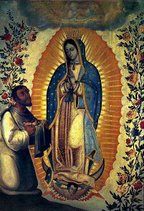



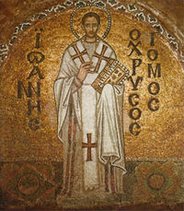
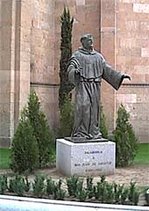


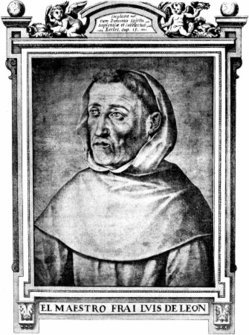





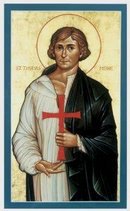





No comments:
Post a Comment